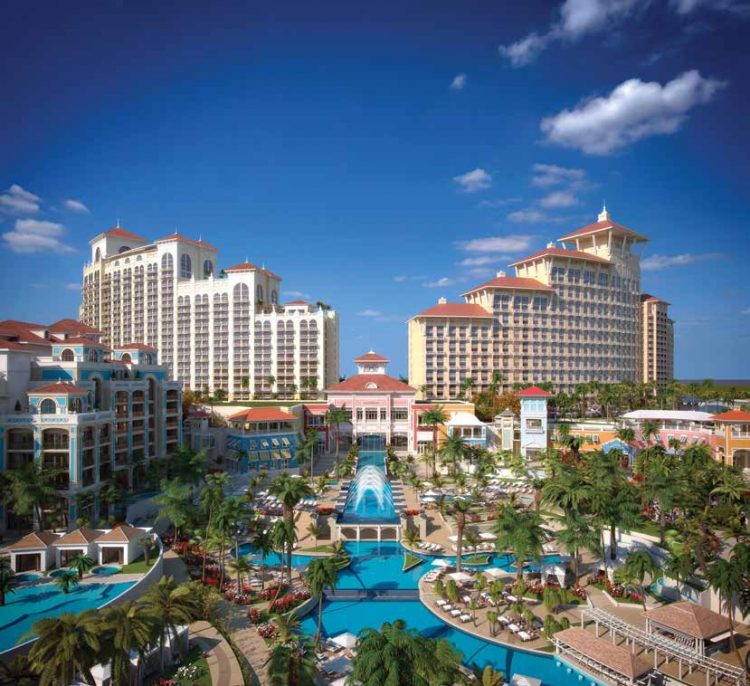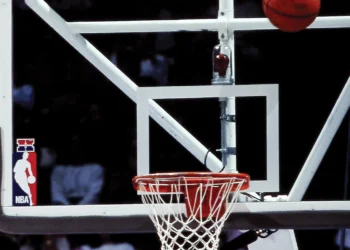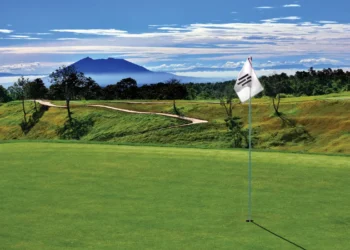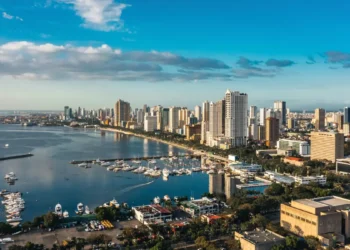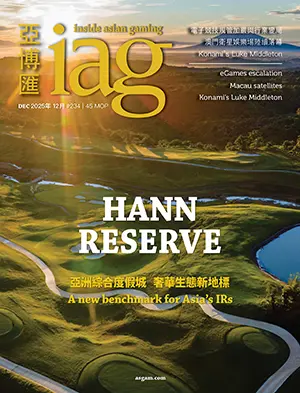The Caribbean’s costliest hospitality project ever and a dozen years in the making, Baha Mar was conceived by Swiss-born, ethnic Armenian, Bahamas resident Sarkis Izmirlian and the Bahamas government. After numerous false starts, shattered partnerships, missed opening dates, dueling bankruptcies, Mr Izmirlian’s ousting, sovereign credit downgrades and an opaque process to find a new owner, Baha Mar has now become the biggest Chinese investment in the Caribbean, with venerable Macau casino investor Chow Tai Fook Enterprises (CTFE) as its owner, a subsidiary of state-owned China State Construction Engineering as its primary contractor and The ExportImport Bank of China as its principal lender.
CTFE, founded by late Hong Kong billionaire Cheng Yu-tung and now headed by his son Henry Cheng, is poised to open Baha Mar next month in April as a first time owner and operator of an integrated resort.
Beyond Baha Mar’s cautionary tale of grand ambitions – it aimed to be the Caribbean’s largest single phase resort – experts are divided on whether this Bahamas IR with Chinese characteristics will be the Caribbean’s gaming category killer or a US$3.5 billion white elephant.
Global Gaming Asset Management (GGAM) Chairman and CEO William Weidner, who took GGAM into Baha Mar as its casino operator with an announcement at G2E Asia in May 2013 before later withdrawing, voices the mixed emotions the project evokes.
“While we fully supported Sarkis Izmirlian’s vision for Baha Mar and the Bahamas, as the bankruptcy and subsequent activities progressed, we lost interest in the property,” the former Las Vegas Sands president and COO tells Inside Asian Gaming. “But it remains an iconic destination on one of the world’s finest beaches and will assuredly add to the tourism attraction value of the Bahamas.”
“Baha Mar was never really a hotel project in the minds of the partners,” adds John Buchanan, who broke the story that Baha Mar would miss its March 2015 opening for Hotel News Now. Personal ambitions, politics and geopolitical chess trumped business considerations, he believes, leading to feasibility questions persisting even now.
TROPICAL MOON SHOT
“On paper, Baha Mar was not viable. But neither was the Tesla automobile, the Golden Gate Bridge, the first landing on the moon and many other great achievements,” says hotelier, developer and hospitality consultant Mike Webster. “When Baha Mar was originally conceived it was a great dream, driven as much by ego as a desire to create something sustainable and of sustenance for the Bahamian people.”
Baha Mar and divergent views of it emerge from years of bounteous potential and broken promises. Its origin story dates to 2003, featuring then 32-year-old Mr Izmirlian, Bahamas Prime Minister Perry Christie and Cable Beach – the white sand shorefront 10 minutes from the airport on Nassau, the Bahamas’ main island. The conversation between the politician and the heir to a commodities trading fortune – Mr Izmirlian’s father Dikran once cornered the global peanut market – evolved from a single hotel purchase to Mr Izmirlian buying 1,000 acres with a full kilometer of beachfront.
As presently conceived, the project, scheduled to open in phases from 21 April, will have 2,300 rooms in a Baha Mar branded casino hotel managed by Hyatt, a Grand Hyatt for conventions with 200,000 square feet (18,725 square meters) of MICE space, SLS Lux for the hip crowd and Rosewood for the luxury set. Two adjacent hotels and residential components bring the total key count to 3,500. The resort also features a Jack Nicklaus Signature golf course, 40 food and beverage outlets, retail and the world’s largest collection of Bahamanian art. Baha Mar is projected to boost the Bahamas’ GDP by 10% and generate 7,000 new jobs in an economy with double digit unemployment.

“Beyond Baha Mar’s cautionary tale of grand ambitions, experts are divided on whether this Bahamas IR with Chinese characteristics will be the Caribbean’s gaming category killer or a US$3.5 billion white elephant.”
LAS VEGAS ON THE BEACH
“Atlantis [the 3,000-plus key IR created by Sol Kerzner on nearby Paradise Island] is for families. We were going to do Las Vegas on the beach,” Robert Heller, founding president of Mr Izmirlian’s original development vehicle Baha Mar Development, muses from his Manhattan office. “Nothing like that exists in the world. At the time, projects were getting bigger. Bellagio, Borgata – multi-billion dollar projects were all the rage.”
From the start, Baha Mar aimed to use different brands to broaden customer choice and utilize multiple databases.
“The idea was: this will be the place in the Caribbean and scoop the market,” says former Chairman of The Innovation Group, Steve Rittvo, who worked on early Baha Mar feasibility studies. “We couldn’t justify the numbers they were looking for.
“Could you have gotten a reasonable number of high rollers there? Yes. Could you fill the hotels? No. It kept on being hard for me to understand how you justify a property of that size anywhere in the Caribbean.”
Amid today’s diminished global VIP market and increased gaming competition, Mr Rittvo suggests, “Beyond Atlantis, I’m not sure I see huge resorts in the Caribbean anymore. I see it more as boutique hotels with exceptional service.”
Harrah’s Entertainment saw Baha Mar differently and signed as an equity and operating partner in 2005 – its first big deal after acquiring Caesars Entertainment. Despite gaming growth in key US Northeast and Florida feeder markets, the islands remained compelling.
“The Bahamas is the Bahamas. It’s not Atlantic City, Philadelphia, the Gulf Coast. They’re a distinctive destination for US and international travelers,” Caesars Executive Vice President for Government Relations and Corporate Responsibility, Jan Jones Blackhurst, says. “Government was truly invested to build the infrastructure to take the Bahamas to the next level,” including a US$409 million redevelopment of Nassau’s Lynden Pindling International Airport. Harrah’s left the project in March 2008, “when certain benchmarks weren’t met.”
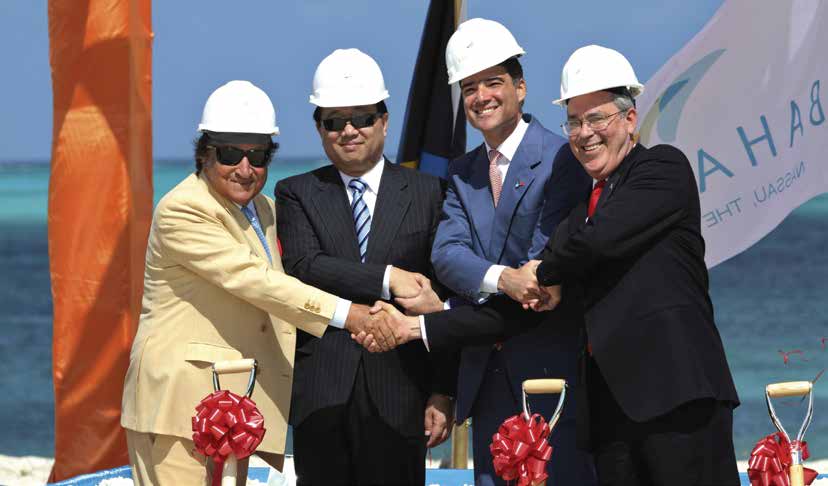
Businessman Dikran Izmirlian, Chairman of The Export-Import Bank of China Li Ruogu, Baha Mar founder Sarkis Izmirlian and Bahamas Deputy Prime Minister Brent Symonette at the 2011 ground breaking ceremony
ENTER THE DRAGON
The exit of Harrah’s and the start of the global financial crisis in 2008 left China as one of Mr Izmirlian’s few financing options. In March 2009, China’s ExIm Bank agreed to lend US$2.45 billion, stipulating that China State Construction Engineering, via its US subsidiary China Construction America (CCA), would be general contractor with the right to import up to 8,000 Chinese construction workers, helping to boost China’s domestic economy during the global slump and promote the US business. The state-owned construction firm also invested US$150 million and Baha Mar contributed US$900 million.
China’s participation fit a pattern of diplomatic and commercial activity in the Caribbean with particular focus on the Bahamas, including islands barely 100 kilometers off the US coast. China’s state sector owns a downtown Nassau hotel and has a redevelopment plan for the capital. China’s government built a US$30 million national stadium and has deployed soft power with educational exchanges, a Confucius Institute at the College of the Bahamas, scholarships to China, job training and bilateral trade assistance.
In retrospect, ExIm financing foreshadowed a Chinese takeover of the project. Baha Mar blamed the contractor’s poor work for missed openings in December 2014, March 2015 and May 2015, going public with that criticism in a surprise US bankruptcy filing in June 2015, with construction reportedly 97% complete. A source with on-site knowledge recounted examples of apparent deliberately poor craftsmanship. After the bankruptcy filing, CCA employees were found smuggling computers and documents – some seeming to acknowledge substandard work – from project offices. Mr Izmirlian hoped, under US Chapter 11 reorganization, to retain control, remove CCA and bring in a different contractor.
JUNK STATUS
The Bahamian government, which sees Baha Mar as a key national project, felt compelled to side with Chinese interests – those ties holding greater national importance and long term potential than the relationship with Mr Izmirlian, who has lost his investment. Local bankruptcy proceedings under the Bahamas’ English style code led to a liquidator taking possession of Baha Mar. Other than Prime Minister Christie’s government using local workers to complete the convention center to host the long scheduled Inter-American Development Bank meeting in April last year, construction was idle for more than a year as the government tried to broker a deal. In the meantime, the Bahamas suffered two Standard & Poor’s credit downgrades, reducing its sovereign debt to junk status.
Last August, Prime Minister Christie announced a deal with CCA to resume work while the search for a buyer continued. Insiders say that agreement essentially gave Chinese state interests control over the project, making a Chinese buyer likely. In October, Chow Tai Fook announced it was in talks to acquire Baha Mar, with a deal finalized in December. The deal won’t officially close until construction is completed.
CTFE knew Baha Mar via its Rosewood brand, acquired in 2011 and headed by Henry Cheng’s daughter Sonia – a Harvard graduate like her older brother Adrian, a top executive in the family’s New World Development and Chow Tai Fook Jewellery businesses and a Chinese People’s Political Consultative Conference member like her father.
The deal takes a page out of patriarch Cheng Yu-tung’s book. New World Development became the largest foreign investor in China largely through deals in the wake of the 1989 Tiananmen Square massacre, when even many Hong Kong tycoons shunned the mainland, getting bargains while supporting Beijing. Similarly, observers believe CTFE acquired Baha Mar at a discount – terms have not been disclosed, but a source estimates it contributed US$200 million toward the April opening – while reviving (and agreeing to pay for) a Chinese showcase project in the Western Hemisphere.
Baha Mar, “is a win-win for Chow Tai Fook and the Chinese government,” The Innovation Group Vice President Michael Zhu says. “Diversification is part of their strategy, geographically and business-wise.”
GOING GLOBAL
Cheng Yu-tung, who succumbed to a long illness last September, bought 10% of Stanley Ho’s STDM casino vehicle in 1982 but failed in bids for other gaming assets over decades. Finally, in 2015, CTFE took majority ownership of Vietnam’s Hoi An South Integrated Resort project, partnering with leading Macau junket promoter Suncity Group and local investment group VinaCapital, breaking ground last April.
CTFE is also a minority partner in Destination Brisbane group, led by Star Entertainment, which won the 2015 bid to create a US$2.3 billion IR as part of a comprehensive riverfront redevelopment of the Australian city. The Brisbane team, including Hong Kong-listed developer Far East Consortium, is also jointly expanding Star’s Jupiters Gold Coast, 60 kilometers to the south.
Mr Heller believes CTFE’s links to the China market, irrelevant when Baha Mar was conceived, matter enormously now.
“Between China’s investment in the project and Chines investment in other Bahamas projects, there’s a good enough reason to direct travel there, packaged with Disney World and other attractions,” he explains. The Bahamas allows visa-free entry to Chinese citizens holding US visas.
“Status is an attraction, traveling all the way to the Caribbean instead of Vietnam or Thailand,” Mr Zhu adds.
But Mr Buchanan questions whether there’s sufficient airlift and traveler demand to support the projected 15% rise in the Bahamas’ room count.
“Occupancy needs to go up or Baha Mar will lead to cannibalization or rate wars,” he says.
Mr Webster, co-founder of crisis management firm KorCrisis, says Baha Mar needs, “a total rebrand and change of the entire business model, with a multimillion dollar branding and PR campaign” to shake the shadow of missed openings. Others say false starts don’t matter to consumers.
“The elephant in the room is Cuba,” Mr Rittvo warns, coupled with potential expansion of gaming in Florida. “A lot has happened [in recent years] that cuts off feeder markets.”
Of course, even before opening, Baha Mar has survived some awfully tough times.
Representatives of Mr Izmirlian, Chow Tai Fook Enterprises and the Bahamas government expressed interest in contributing to this report, but none provided requested information. CCA also did not respond to inquiries.






